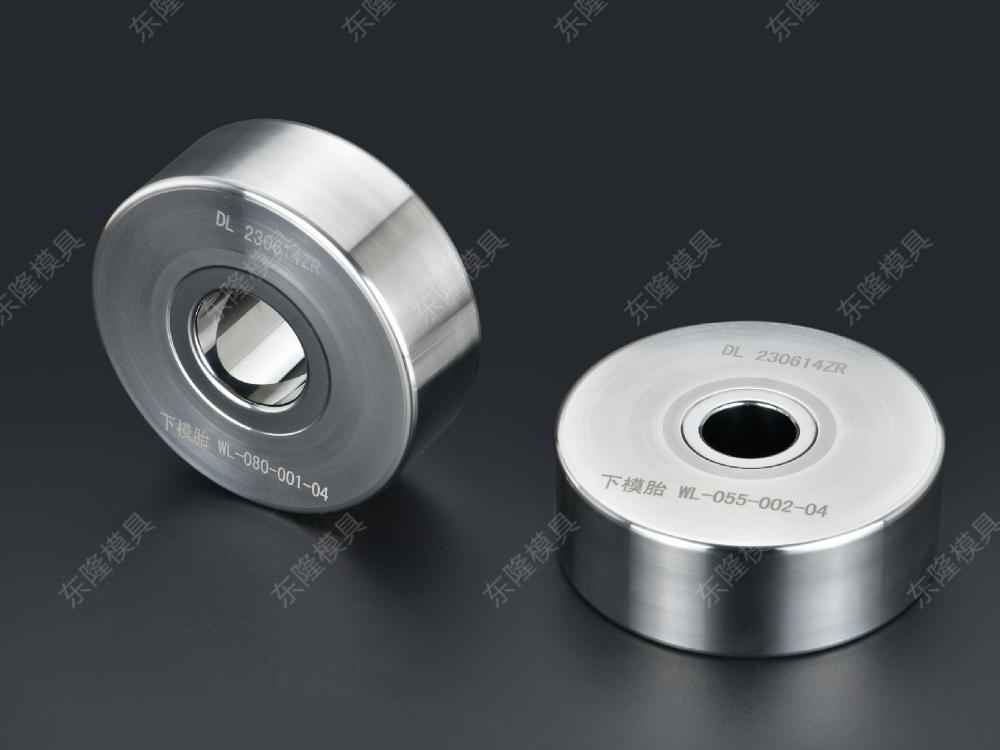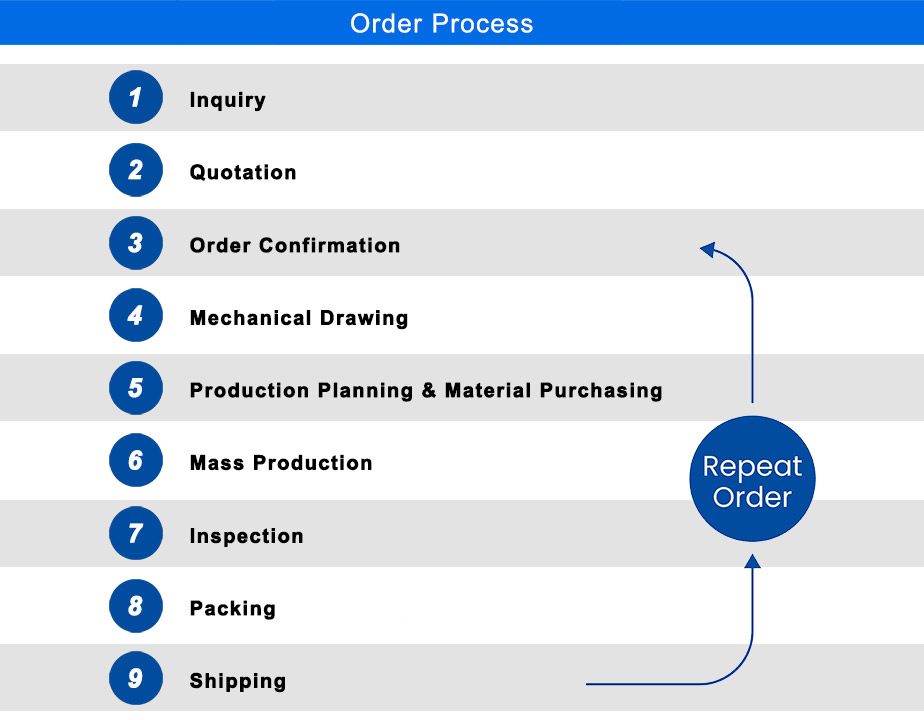 Hot Heading Dies are specialized tools used in the manufacturing process of hot heading or hot forging, which involves the shaping of metal materials at high temperatures. These dies are essential for producing components that require high precision, strength, and durability, particularly in industries such as automotive, aerospace, and heavy machinery. In this article, we will explore the design, function, and applications of Hot Heading Dies, their materials, and how they play a crucial role in metal forming processes.
Hot Heading Dies are specialized tools used in the manufacturing process of hot heading or hot forging, which involves the shaping of metal materials at high temperatures. These dies are essential for producing components that require high precision, strength, and durability, particularly in industries such as automotive, aerospace, and heavy machinery. In this article, we will explore the design, function, and applications of Hot Heading Dies, their materials, and how they play a crucial role in metal forming processes.
Hot Heading Dies are tools designed to shape and form metal materials by applying high pressure during the hot heading process. This process involves heating metal to a malleable state and then using dies to form the metal into a specific shape, such as fasteners, bolts, and automotive components. The dies are engineered to withstand extreme temperatures and pressures while maintaining precision and durability.
The process of hot heading is commonly used to form metal parts from wire, bars, or billets, where the metal is heated to a temperature that makes it easier to shape. Hot heading dies are typically made from high-performance tool steels or other heat-resistant materials to ensure they can endure the harsh conditions of the process.
The main function of hot heading dies is to shape the heated metal into the desired form. The die consists of two main components: the female die (the cavity into which the metal is pressed) and the male die (the punch that applies force to the metal). These components work together to mold the metal as it is forced into the die cavity.
Key features of hot heading dies include:
Precision Engineering: Hot heading dies are designed to create highly precise shapes with tight tolerances, ensuring consistency across multiple parts.
Heat Resistance: Given the high temperatures involved in the hot heading process, these dies are made from heat-resistant materials, such as high-carbon tool steels, which maintain their strength and hardness even at elevated temperatures.
Durability: Since the process involves intense pressure and heat, hot heading dies are built to be durable and long-lasting. The die materials and design are optimized to minimize wear and tear over time.
Customization: Hot heading dies can be custom-designed to accommodate specific part shapes, sizes, and materials, ensuring optimal performance for the unique needs of different industries.
The materials chosen for hot heading dies play a significant role in their performance and longevity. Some of the most commonly used materials include:
Tool Steels: Tool steels, such as AISI H13, D2, and other high-carbon alloys, are commonly used for hot heading dies due to their excellent resistance to wear, high toughness, and ability to maintain hardness at high temperatures.
High-Speed Steels (HSS): High-speed steels offer superior heat resistance and can maintain their cutting and forming capabilities even at higher operational temperatures.
Carbide: For extremely high-precision applications, carbide dies are sometimes used due to their exceptional hardness and wear resistance. These materials can withstand the most demanding conditions.
Hot heading dies are used in a wide range of industries, particularly where strong, durable, and precise metal components are required. Common applications include:
Automotive Industry: In the automotive sector, hot heading is used to produce components such as bolts, nuts, washers, and fasteners. These parts require high strength and durability to withstand the demanding conditions in vehicles, such as vibrations and high temperatures.
Aerospace: Aerospace manufacturers use hot heading dies to create critical components such as turbine blades, fasteners, and structural parts. The high precision and material strength of these parts are essential for ensuring the safety and performance of aircraft.
Construction and Heavy Machinery: Parts such as shafts, pins, and gears used in construction equipment and machinery are often formed using hot heading dies. These components need to withstand extreme stresses and wear during operation.
Industrial Equipment: Hot heading dies are also used in the production of components for industrial machinery, where high-strength parts are necessary to ensure the longevity and efficiency of machines.
The hot heading process typically involves the following steps:
Heating the Metal: The metal material, often in the form of billets or wire, is heated to a high temperature, typically between 900°C to 1,200°C, depending on the material being used.
Forming the Metal: The heated material is then placed in the hot heading die. The male die applies pressure to the material, forcing it into the female die cavity, which shapes the metal into the desired form.
Cooling and Ejection: After the part is formed, it is cooled, and the shaped metal is ejected from the die. The part may undergo additional processes, such as trimming, finishing, or heat treatment, to achieve the final specifications.

FAQ:
What are Hot Heading Dies?
Hot Heading Dies are an important tool in metalworking, used to shape the head of raw metal at high temperatures. They are usually made of high-strength, heat-resistant alloys that can withstand high temperatures and pressurized working environments.
What is the role of Hot Heading Dies in metalworking?
Hot Heading Dies are used for precision shaping in metalworking. By controlling temperature and pressure, it is able to mold the raw metal into the desired head shape, providing precise geometry and dimensions for subsequent processing or use.
What are Hot Heading Dies typically made of?
Hot Heading Dies are typically made from high-strength, heat-resistant alloys. These materials are able to maintain stable performance under high temperatures and pressures, ensuring that Hot Heading Dies can work stably for long periods of time.
How do Hot Heading Dies work?
The working principle of Hot Heading Dies is based on the high-temperature plastic deformation of metals. During processing, the raw metal is heated to a certain temperature to bring it to a plastic state. Then, pressure and temperature are applied by Hot Heading Dies to plastically deform the raw metal material to form the desired head shape.
What are the applications of Hot Heading Dies in automobile manufacturing?
In the automotive industry, Hot Heading Dies are widely used in the manufacture of engine parts, chassis components and other metal products. By precisely controlling the shape and size, Hot Heading Dies can ensure the quality and performance of automotive parts and improve the safety and reliability of the whole vehicle.
What are the key points for maintenance and care of Hot Heading Dies?
Maintenance and care of Hot Heading Dies includes regular cleaning and inspection of the tool surface to ensure that it is free of impurities and damage; regular replacement of parts that are subject to severe wear to ensure that they work properly; and the need to control the temperature and pressure of the machining process to avoid damage to the tool from being too high or too low.
What is the development trend of Hot Heading Dies?
With the continuous progress of science and technology and changes in market demand, the development trend of Hot Heading Dies will be towards intelligence, efficiency and environmental protection. In the future, Hot Heading Dies may adopt more advanced materials and manufacturing processes to improve the durability and precision of the tools; at the same time, automation and intelligent control of the machining process will be realized through the introduction of intelligent technology.
How to choose the right Hot Heading Dies?
Choosing the right Hot Heading Dies requires consideration of a number of factors, including the type and nature of the metal material, the shape and size of the part to be machined, and the production batch size. When making a selection, it is necessary to make comprehensive considerations based on the actual situation and refer to the specifications and performance parameters provided by the manufacturer to select the most suitable tool.
Hot Heading Dies Product Information | |
Product Name | Hot Heading Dies |
Brand Name | Donglong |
Place of Origin | Dongguan, Guangdong, China |
Specification | Customized on Request |
Customization | Material, size, shape, convex and concave marking, coating, laser engraving mark and packing are all customizable. |
Product Material | Carbide.ASP23 Vanadis.CPMRTXM4.SKD11SKD61HSSA2M2D2SUJ2.S45C.ect |
Standard | DIN ANSI BS JIS |
Tolerance | ±0.002mm |
Surface Treatment | TiCNTiN,Aitain,Ticrnnitriding Black oxygened Black coating etc available |
Polishness | Close to Ra0.2 Hardness Depends on material(HRC60~94) |
Hardness | Depends on material(HRC60~94) |
Shaping Mode | Grinding, wire cutting, EDM, cnc machining, cnc turning, cnc Milling |
Application | Machinery Parts and Molds |
Material for Core of Hot Heading Dies | ||||||
Grade | WC+Other | Co | Grain Size | Density | Hardness | TRS |
(±0.5%) | (±0.5%) | (g/cm³) | (HRA)±0.5 | (N/mm²) | ||
KG5 | 88 | 12 | Medium | 14.31 | 88.3 | 340 |
KG6 | 86 | 14 | Medium | 14.12 | 87.3 | 320 |
EA65 | 82 | 18 | Coarse | 13.75 | 85 | 300 |
EA90 | 76 | 24 | Coarse | 13.22 | 82.8 | 270 |
ST6 | 85 | 15 | Coarse | 13.8 | 86 | 270 |
ST7 | 80 | 20 | Coarse | 13.4 | 85.3 | 270 |
VA80 | 80 | 20 | Coarse | 13.58 | 84 | 280 |
VA90 | 78 | 22 | Coarse | 13.39 | 82.5 | 240 |
VA95 | 75 | 25 | Coarse | 13.12 | 81.5 | 220 |
Material for Casing of Hot Heading Dies | |||
Material | Hardness (HRC) | Features | Applications |
H13 | 59-61 | H13 is a chromium molybdenum hot work steel with exceptional hot hardness and abrasion resistance, general hardness, and toughness. | Used for extrusion dies, forging dies, stamping tools, etc. |
SKD11 | 58-61 | SKD11 tool steel has good wear resistance and size ability after heat treatment. | Used for tensile dies, cold extrusion dies, first punch holder, etc. |
SKD61 | 43-53 | SKD61 steel is a high-grade die casting die. It has heat shock resistance, heat deformation resistance, heat fatigue resistance. | Used for heat work dies, cold heading dies, second punch holders. |